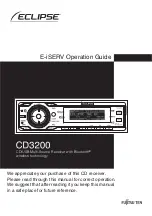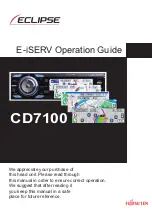
Bosch Security Systems | 2011-02
Praesideo 3.5
| Installation and User Instructions | ISO7240-16: 2007
en
| 61
ISO7240-16: 2007 compliancy checklist
Additional clauses
Clause / Requirement
Compliance
Signature
EN54-16 and ISO7240-16 are very similar standards. The
following list gives a summary of the differences between
the EN54-16 and the ISO7240-16 standards for voice
alarm control and indicating equipment. Only essential
differences are listed. Differences in phrasing between the
standards (that occur very frequently) are omitted. Also
similar clauses that have a different number in ISO7240-16
compared to EN54-16 are not listed. The changes are
divided into sections
•
Additions
: clauses in ISO7240-16 that do not exist in
EN54-16; the ISO7240-16 text is generally given.
•
Changes
: clauses in EN54-16 and ISO7240-16 that
are basically the same but differ in detail, the change is
given by using
italic
typeface.
•
Exclusions
: requirements that are in EN54-16 but are
not in ISO7240-16.
Responsibility of the installer. The installer must use the
checklist for EN54-16 before proceeding with this list for
ISO7240-16
Clause / Requirement
Compliance
Signature
6 Quiescent condition
Any kind of system information may be displayed during the
quiescent condition. However, no indications shall be given
that can be confused with indications used in
•
the test condition.
The optional test condition is not supported by the
Praesideo system.
7
Voice-alarm condition
7.1 Reception and processing of alarm signal
7.1.4
Where the s.s.c.i.e. is used for non-emergency
purposes, the voice-alarm condition shall disable or
override any functions not connected with the emergency
functions.
Upon entering the emergency mode Praesideo can be
configured to override non-emergency functions, based on
priority settings.
7.2 Alert signal - Optional function
7.2.1
The s.s.c.i.e. may produce one or more alert signals
complying with ISO 7731.
Praesideo offers various alert signals that comply with
ISO7731. Also prerecorded signals can be stored and
selected in Praesideo.
The installer must select and configure an alert signal that is
in compliance with ISO7731 from the list of available
signals that Praesideo offers. The preferred signal and
required sound pressure level depend on the the actual
application, as the parameters of the danger signal (signal
level, frequency spectrum, temporal pattern, etc.) shall be
designed to stand out from all other sounds in the
reception area and shall be distinctly different from any
other signals.
The sound pressure level shall be at least 65dBA at any
position in the signal reception area, while being at least
15dB above A-weighted ambient noise, but it may not
exceed 118dBA.
The danger signal shall include frequency components
between 500Hz and 2500Hz. Pulsating danger signals are
preferred to signals that are constant in time, while the
repetition frequencies shall be in the range from 0.5Hz to
4Hz.
Examples of compliant Praesideo tones are the ‘DIN alarm’
(sweeping signal from 1200Hz down to 500Hz in 1s,
repeating) and the ‘2-tone alarm 2’ (alternating frequencies
of 650Hz and 850Hz, every frequency lasts 500ms,
repeating).
















































